Continuing up Fifth Avenue from where the previous installment of Don’t Forget to Look Up ended, this stretch along the upper half of Central Park is known as Museum Mile, and it is indeed home to an abundance of august institutions, starting with the Metropolitan Museum of Art and ending with the Museum for African Art at Central Park’s northeast corner. Trying to take in all of this cultural treasure trove might be overwhelming, but we’ll stick to what we can see from Fifth Avenue–which is still quite a bit!
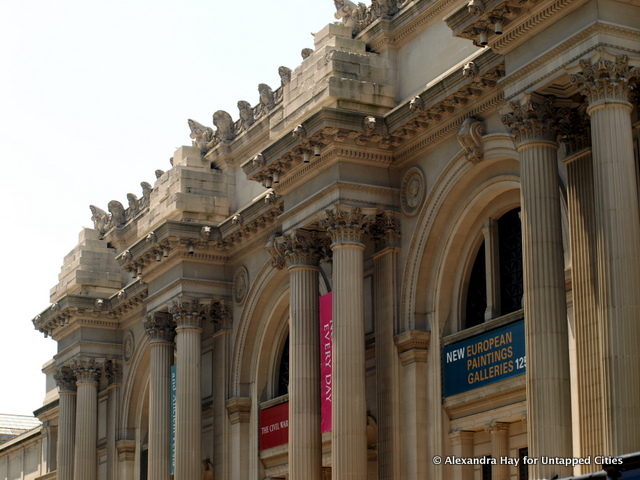 The Metropolitan Museum of Art
The Metropolitan Museum of Art
Jonathan Lethem has described the Metropolitan Museum of Art as “an island city itself,” and it is certainly a sight to behold: a sprawling Beaux-Arts behemoth that visually dominates this part of Fifth Avenue. Its stunning contents aside, the Museum’s multiple facades–the central facade, from 1902, was designed by Richard Morris Hunt, and the flanking facades are the work of McKim, Mead & White–form a truly monumental architectural vista. With all the fluted Corinthian columns and huge arches to look at, some may miss the four piles of uncut stone atop those columns. In Richard Morris Hunt’s original plan for the building, these were meant to be massive allegorical statues representing Sculpture, Painting, Architecture, and Music. Intrigued? Untapped Cities has also uncovered some of the secrets hidden within the Museum.
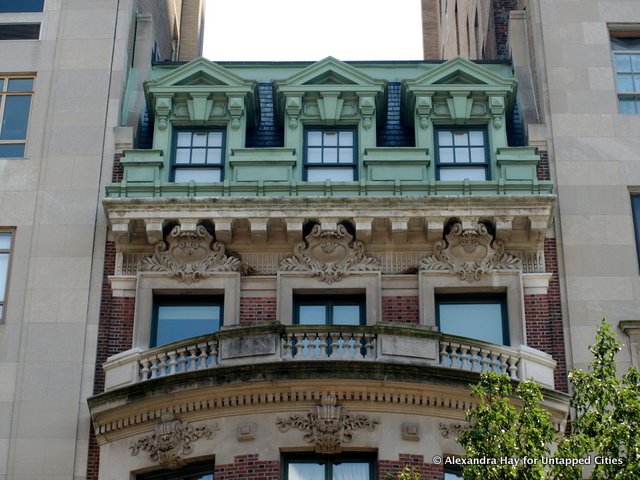 991 Fifth Avenue, the American Irish Historical Society
991 Fifth Avenue, the American Irish Historical Society
Though diminutive in scale relative to its neighbors, 991 Fifth Avenue, home of the American Irish Historical Society, is a five-story townhouse that nonetheless exudes an air of Gilded Age opulence. With an elegant bow-front facade and three patinated and pedimented dormer windows, one can easily imagine when this was the mansion of millionaires.
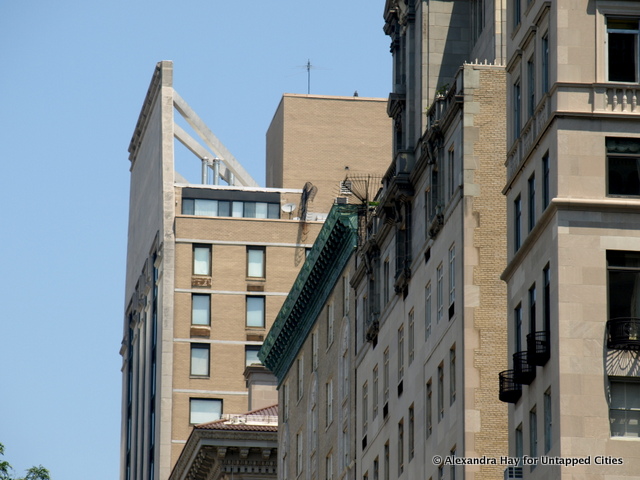 1001 Fifth Avenue
1001 Fifth Avenue
Designed in 1980 by Philip Johnson and John Burgee, 1001 Fifth Avenue is a perfect example of postmodernist shenanigans. From the same architect who gave us the “Chippendale Skyscraper,” the building’s false-front top, propped up from behind, makes a strong contrast with the Metropolitan Museum of Art right across the street. You can read more about 1001 Fifth Avenue in Untapped Cities’ Daily What?! column.
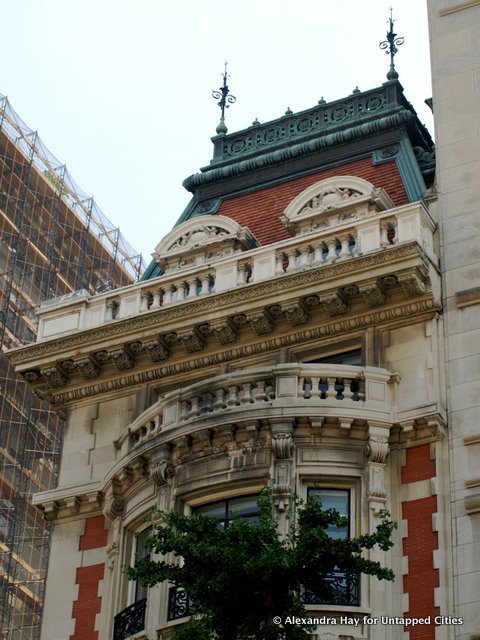 1009 Fifth Avenue
1009 Fifth Avenue
After a short diversion into postmodernism, we bounce back to Gilded Age splendor: 1009 Fifth Avenue, designed in 1901 by Welch, Smith & Provot, is a fanciful mix of brick, quoins, and balustrades magnificently topped by a mansard roof and copper crest. Originally the home of Benjamin–brother of James Duke, founder of the American Tobacco Company–and Sarah Duke, the mansion was purchased in 2010 by billionaire Carlos Slim, the richest man in the world at the time, for $44 million.
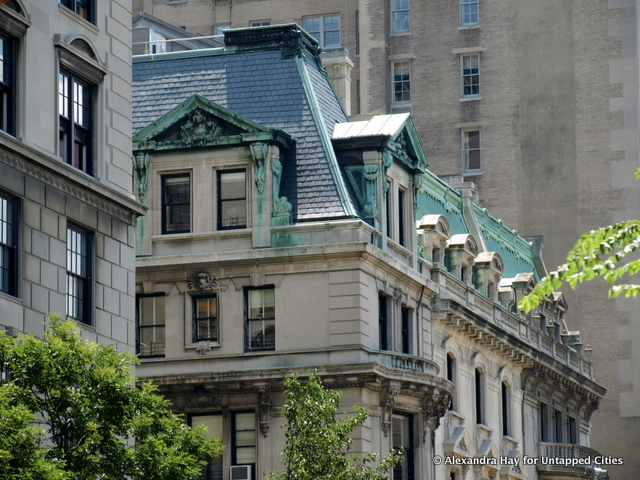 from left to right: 1028, 1027, and 1026 Fifth Avenue
from left to right: 1028, 1027, and 1026 Fifth Avenue
These three buildings together form a graceful trio of Beaux-Arts facades, all topped with mansard roofs and dormer windows. Now the Marymount School, all three mansions were completed in 1903: 1026 and 1027 Fifth Avenue were both designed by Van Vleck & Goldsmith, while 1028 Fifth Avenue was designed by C. P. H. Gilbert.
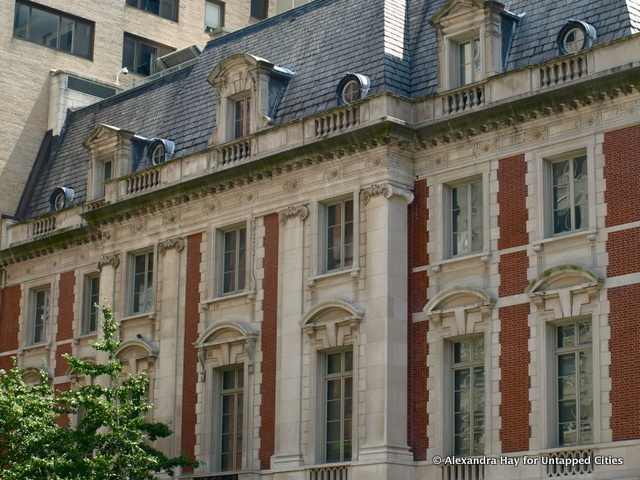 1048 Fifth Avenue, the Neue Galerie
1048 Fifth Avenue, the Neue Galerie
Looking just like an excerpt from Paris’ Place des Vosges, 1048 Fifth Avenue is now the home of the Neue Galerie, a fantastic museum of early twentieth-century Austrian and German art and design. Designed by Carrere & Hastings and completed in 1914, the brick and limestone mansion, once the home of socialite Grace Vanderbilt, was converted to a museum in the 1990s by architect Annabelle Selldorf.
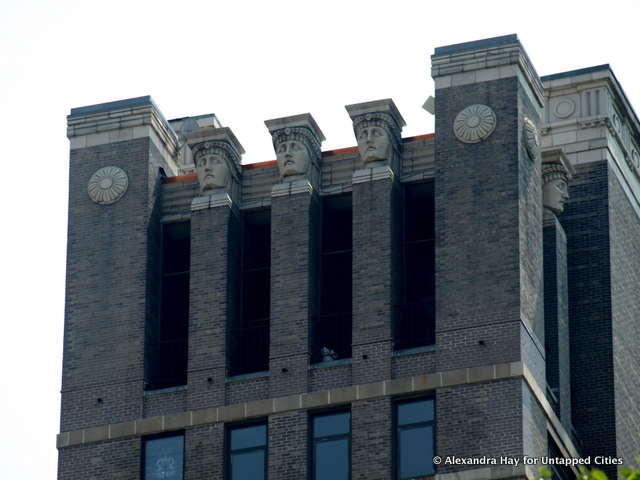 2 East 88th Street
2 East 88th Street
Unless you look all the way up to the top of 2 East 88th Street, you might miss the giant heads atop this otherwise non-exceptional (though high-end) Carnegie Hill apartment building.
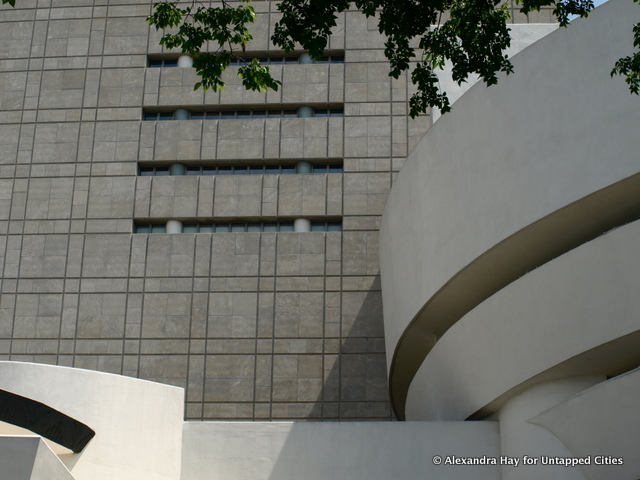 The Solomon R. Guggenheim Museum
The Solomon R. Guggenheim Museum
Frank Lloyd Wright’s striking 1959 building tends to get all the attention, but the Guggenheim Museum also includes an addition designed by Gwathmey Siegel and Associates. The nine-story annex does not attempt to upstage Wright’s building (who could?), but instead acts as a backdrop to Wright’s iconic museum.
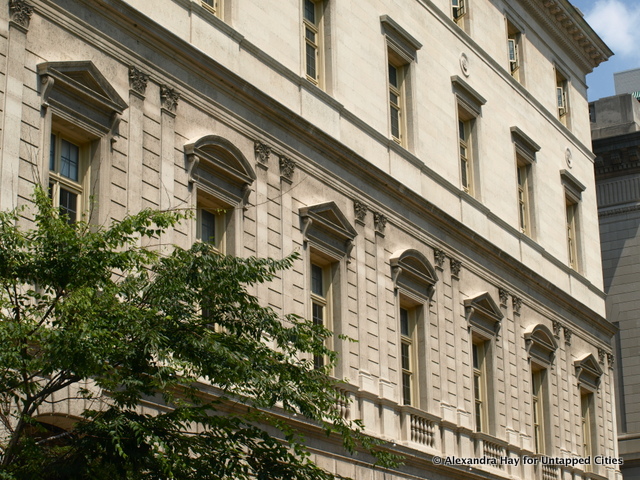 1 East 91st Street, the Otto and Addie Kahn Mansion
1 East 91st Street, the Otto and Addie Kahn Mansion
The warm, rich hue of the Otto and Addie Kahn Mansion, with its limestone facade, enhances the elegance of this well-proportioned, Renaissance-style building, modeled on the fifteenth-century Palazzo della Cancelleria in Rome.
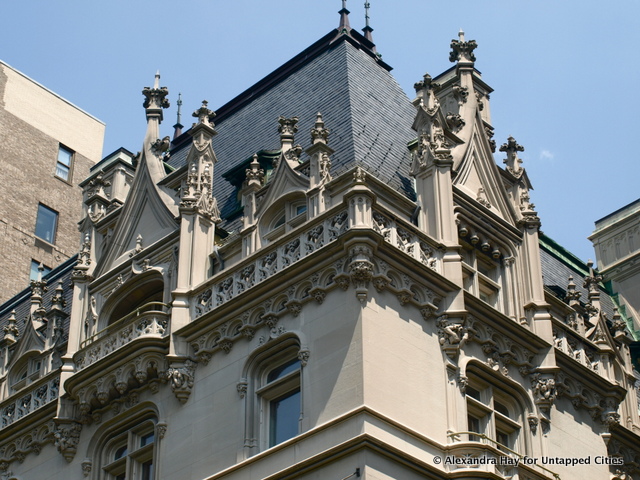 1109 Fifth Avenue, the Jewish Museum
1109 Fifth Avenue, the Jewish Museum
A passerby would probably never guess that the Fifth Avenue facade of the Jewish Museum is in fact a 1993 addition, by Kevin Roche, to the original 1908 structure. Roche matched the architecture of the existing building perfectly, replicating the ornate French Gothic style of C. P. H. Gilbert’s chateau for Felix and Frieda Warburg.
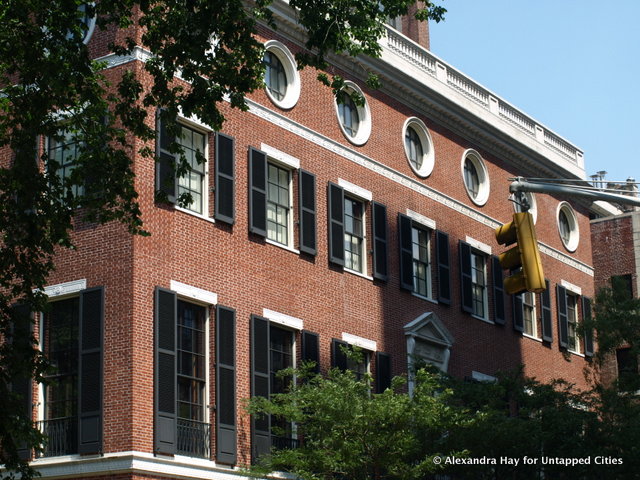 1130 Fifth Avenue, the original International Center of Photography
1130 Fifth Avenue, the original International Center of Photography
Delano & Aldrich’s 1915 house for Willard and Dorothy Whitney Straight is a refined example of the neo-Georgian style, with its brick facade, balustrade, and variety of window shapes and sizes. The architects were inspired by Sir Christopher Wren’s late seventeenth-century addition to Hampton Court for the new monarchs William and Mary. In the 1970s, 1130 Fifth Avenue became the original home of the International Center of Photography, which has since moved to midtown.
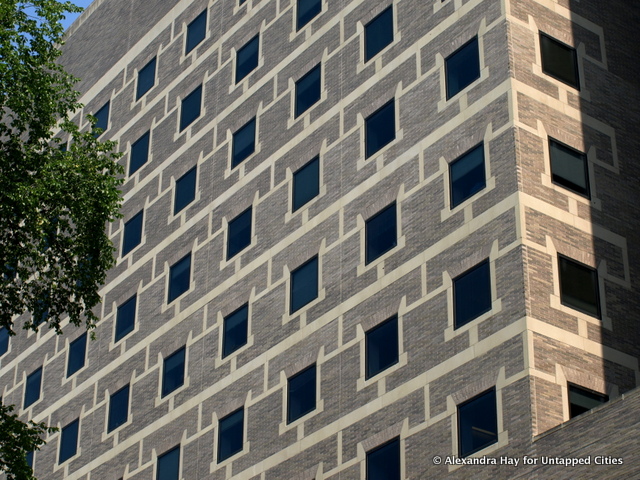 1190 Fifth Avenue, the Guggenheim Pavilion
1190 Fifth Avenue, the Guggenheim Pavilion
Completed in 1991 and designed by I. M. Pei, the Guggenheim Pavilion and the surrounding buildings of the Mount Sinai Medical Center represent a departure from the adjacent parts of Fifth Avenue, which is primarily residential as it runs along Central Park. Architecture critic Herbert Muschamp described the Guggenheim Pavilion as more like “a health spa, a tranquil oasis” than a hospital in the New York Times.
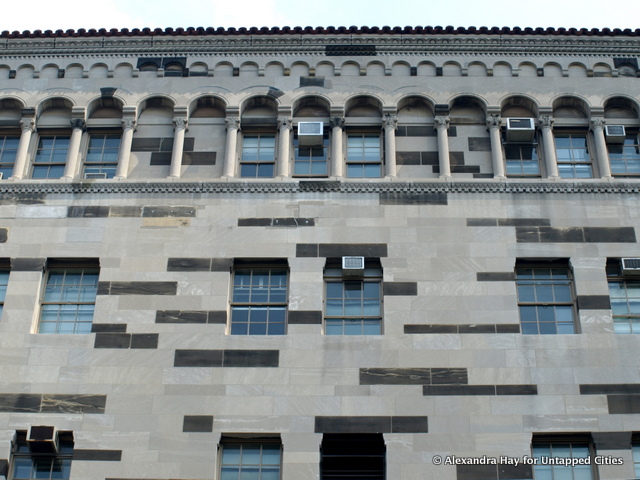 1216 Fifth Avenue, the New York Academy of Medicine
1216 Fifth Avenue, the New York Academy of Medicine
The medical theme of this area continues with the New York Academy of Medicine, completed in 1926 and designed by York & Sawyer. The building has a distinctive piebald facade composed of limestone and sandstone, with eclectic Byzantine and Romanesque details, and plenty of Latin inscriptions, thrown in.
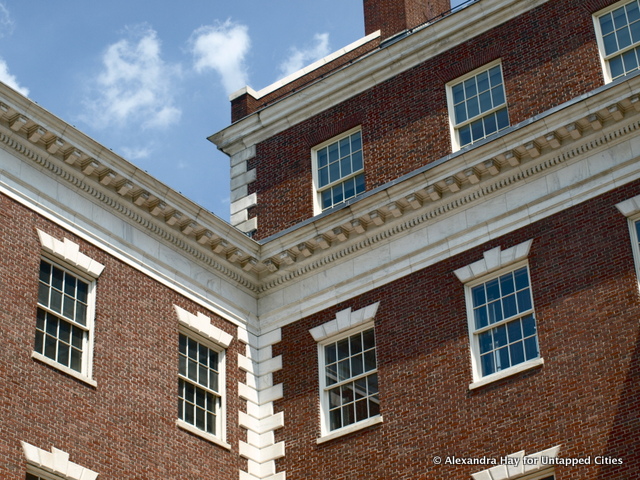 1220 Fifth Avenue, the Museum of the City of New York
1220 Fifth Avenue, the Museum of the City of New York
Given the Colonial Revival style of the Museum of the City of New York, this might be mistaken for a much older building. Though it looks like a product of the 1700s, with its staid brickwork, quoins, and cornice, it was actually completed in 1932 and designed by Joseph Freedlander.
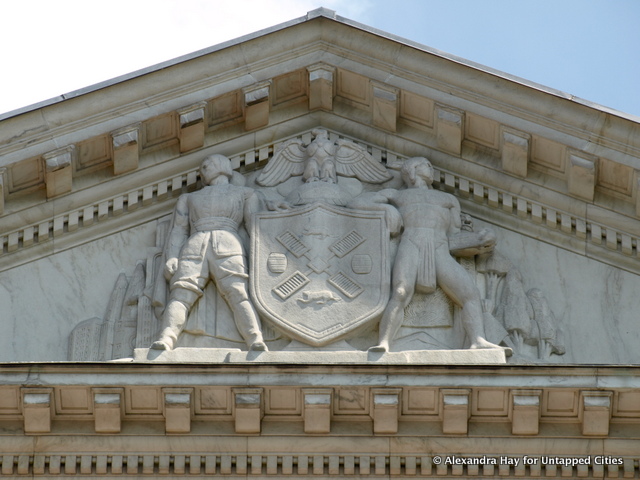 The Museum of the City of New York’s pediment and tympanum
The Museum of the City of New York’s pediment and tympanum
Unless you’ve taken a close look at the flag of the City of New York lately, the relief sculpture atop the Museum may pique your curiosity. It is in fact the seal of the City of New York, depicting a Native American and a colonist. Between them is a shield emblazoned with a windmill–symbolizing New York’s Dutch origins as New Amsterdam–along with two beavers and two flour barrels, representing New York’s original trade goods.
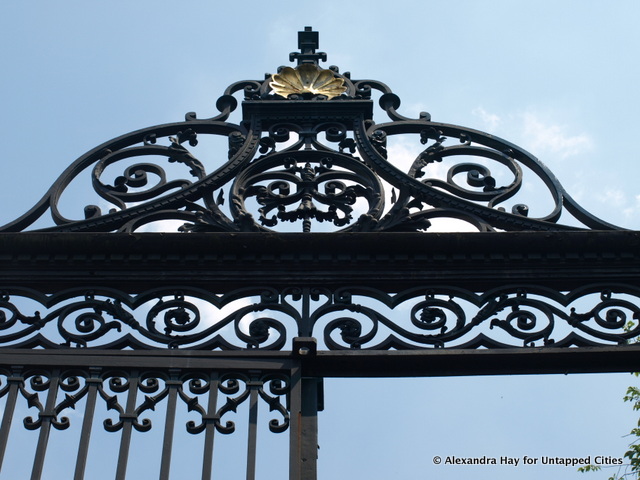 Conservatory Garden Vanderbilt Gate, west side of Fifth between 104 and 105th Streets
Conservatory Garden Vanderbilt Gate, west side of Fifth between 104 and 105th Streets
The ornate wrought iron gate at the entrance of Central Park’s Conservatory Garden is a remnant of Cornelius Vanderbilt II’s extravagant Fifth Avenue mansion at 58th Street, where you can now find Bergdorf Goodman.
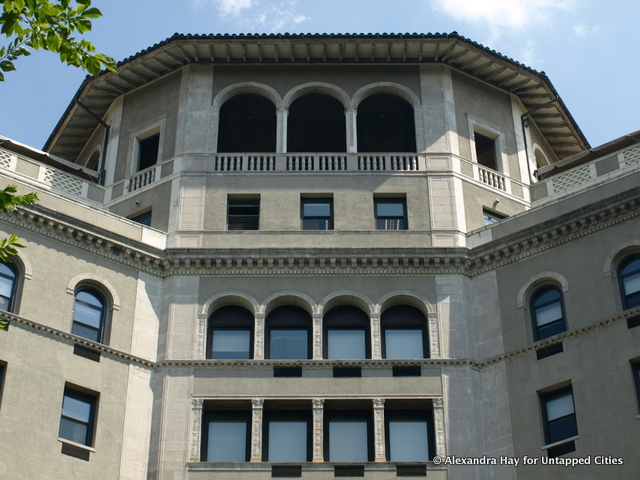 1249 Fifth Avenue, the Terence Cardinal Cooke Health Care Center
1249 Fifth Avenue, the Terence Cardinal Cooke Health Care Center
The Terence Cardinal Cooke Health Care Center has a decidedly Italian feel, with its arched windows and loggia. The Center is known for its award-winning rooftop terrace designed by Dirtworks Landscape Architecture.
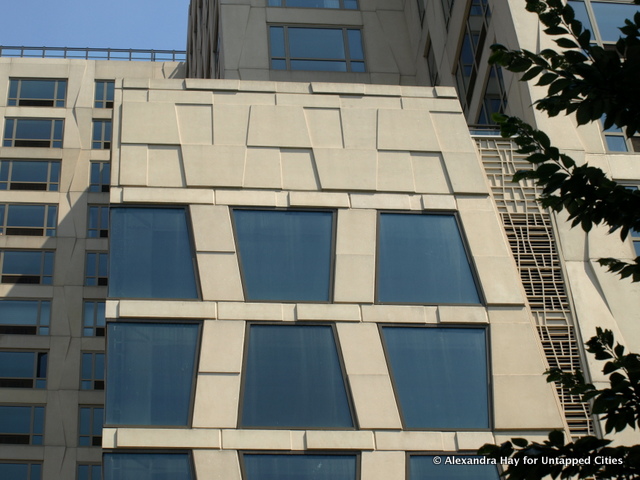 1280 Fifth Avenue, the Museum for African Art
1280 Fifth Avenue, the Museum for African Art
The Museum for African Art, designed by Robert A.M. Stern Architects, and SLCE Architects’ 19-story condo tower above it, are a striking landmark for the northeastern corner of Central Park. The trapezoidal windows, patterned precast concrete panels, and similarly patterned lattice are meant to evoke patterns found in traditional African weaving.
Next week, Don’t Forget to Look Up completes this five-part journey up Fifth Avenue, covering the final stretch from 110th Street to the Harlem River!





